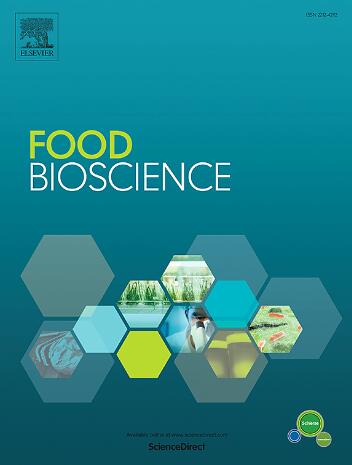Plant hormones mediated temperature-induced anthocyanin accumulation in blood oranges (Citrus sinensis L. Osbeck)
IF 4.8
1区 农林科学
Q1 FOOD SCIENCE & TECHNOLOGY
引用次数: 0
Abstract
Anthocyanins are enriched in blood oranges (Citrus sinensis L. Osbeck) in response to external environmental stimulation during postharvest storage, while the role of plant hormones in anthocyanin accumulation in response to low-temperature inducement is still poorly studied. Here, we investigated the anthocyanin profiles and fruit quality of blood oranges treated with different temperatures and then further focused on the mechanisms of plant hormone-mediated anthocyanin biosynthesis induced by low temperatures using proteomics. Total and individual anthocyanins were significantly increased in blood oranges under the low-temperature storage at 8 °C, among which cyanidin 3-glucoside and cyanidin 3-(6″-malonylglucoside) were increased by 6.51 and 6.77 times at the end of storage, respectively. Low temperature effectively delayed the weight loss and maintained the water status. For flavor changes, high levels of sucrose, citric acid, and malic acid were observed in fruits stored at 8 °C, and low temperature delayed the changes of overall volatile flavor compounds, in which aroma-active compounds were closer to those in fresh fruit. The proteomic analysis found that differentially expressed proteins between fruit stored at 8 and 25 °C were enriched in “Phenylalanine metabolism”, “Flavonoid biosynthesis”, “Brassinosteroid biosynthesis” and “Cysteine and methionine metabolism” pathways, indicating that low temperature induced the biosynthesis and signal transduction of brassinosteroids and ethylene (CYP90A1, CYP90C1/D1, CYP92A6, SAMS, ACC oxidase, ETR1), upregulated the expression of anthocyanin-related proteins (PAL, 4CL, CHS1, CHS2, F3′5′H, DFR, ANS, and UFGT), and ultimately promoted anthocyanin accumulation in the postharvest blood oranges.

植物激素介导温度诱导血橙花青素积累的研究
血橙(Citrus sinensis L. Osbeck)在采后贮藏过程中响应外界环境刺激而丰富花青素,而植物激素在低温诱导下花青素积累中的作用尚不清楚。本文研究了不同温度处理下血橙的花青素谱和果实品质,并利用蛋白质组学方法进一步研究了低温诱导植物激素介导的花青素生物合成机制。8℃低温贮藏条件下,血橙总花青素和单体花青素含量显著增加,其中花青素3-葡萄糖苷和花青素3-(6″-丙二酰葡萄糖苷)在贮藏结束时分别增加了6.51倍和6.77倍。低温有效延缓了失重,保持了水分状态。在风味变化方面,8℃贮藏的水果中蔗糖、柠檬酸和苹果酸含量较高,低温贮藏延缓了挥发性风味化合物的总体变化,其中芳香活性化合物更接近新鲜水果。蛋白质组学分析发现,8°C和25°C贮藏果实的“苯丙氨酸代谢”、“类黄酮生物合成”、“油菜素内酯生物合成”和“半胱氨酸和甲硫氨酸代谢”通路中差异表达蛋白富集,说明低温诱导了油菜素内酯和乙烯(CYP90A1、CYP90C1/D1、CYP92A6、SAMS、ACC氧化酶、ETR1)的生物合成和信号转导,上调了花青素相关蛋白(PAL、4CL、CHS1、CHS2、F3’5’h、DFR、ANS和UFGT),最终促进采后血橙花青素的积累。
本文章由计算机程序翻译,如有差异,请以英文原文为准。
求助全文
约1分钟内获得全文
求助全文
来源期刊

Food Bioscience
Biochemistry, Genetics and Molecular Biology-Biochemistry
CiteScore
6.40
自引率
5.80%
发文量
671
审稿时长
27 days
期刊介绍:
Food Bioscience is a peer-reviewed journal that aims to provide a forum for recent developments in the field of bio-related food research. The journal focuses on both fundamental and applied research worldwide, with special attention to ethnic and cultural aspects of food bioresearch.
 求助内容:
求助内容: 应助结果提醒方式:
应助结果提醒方式:


